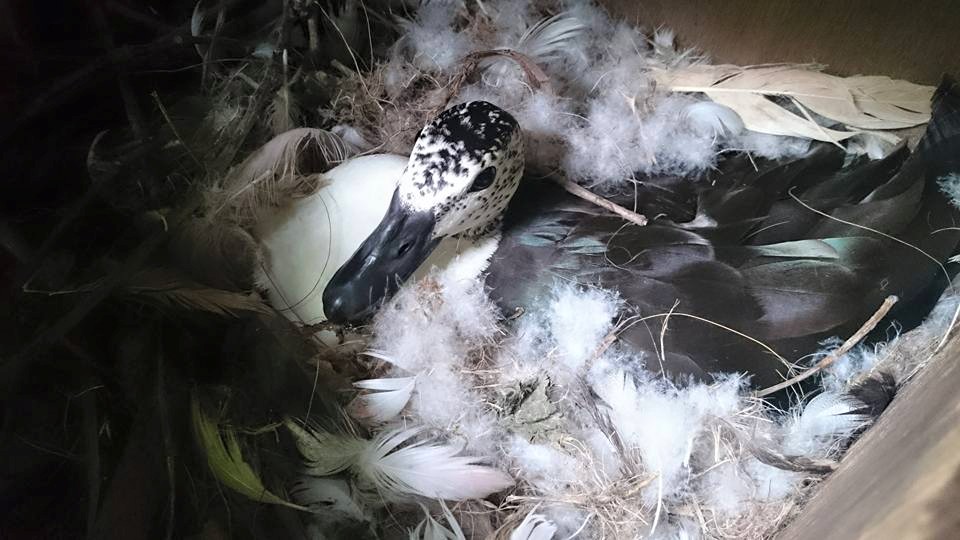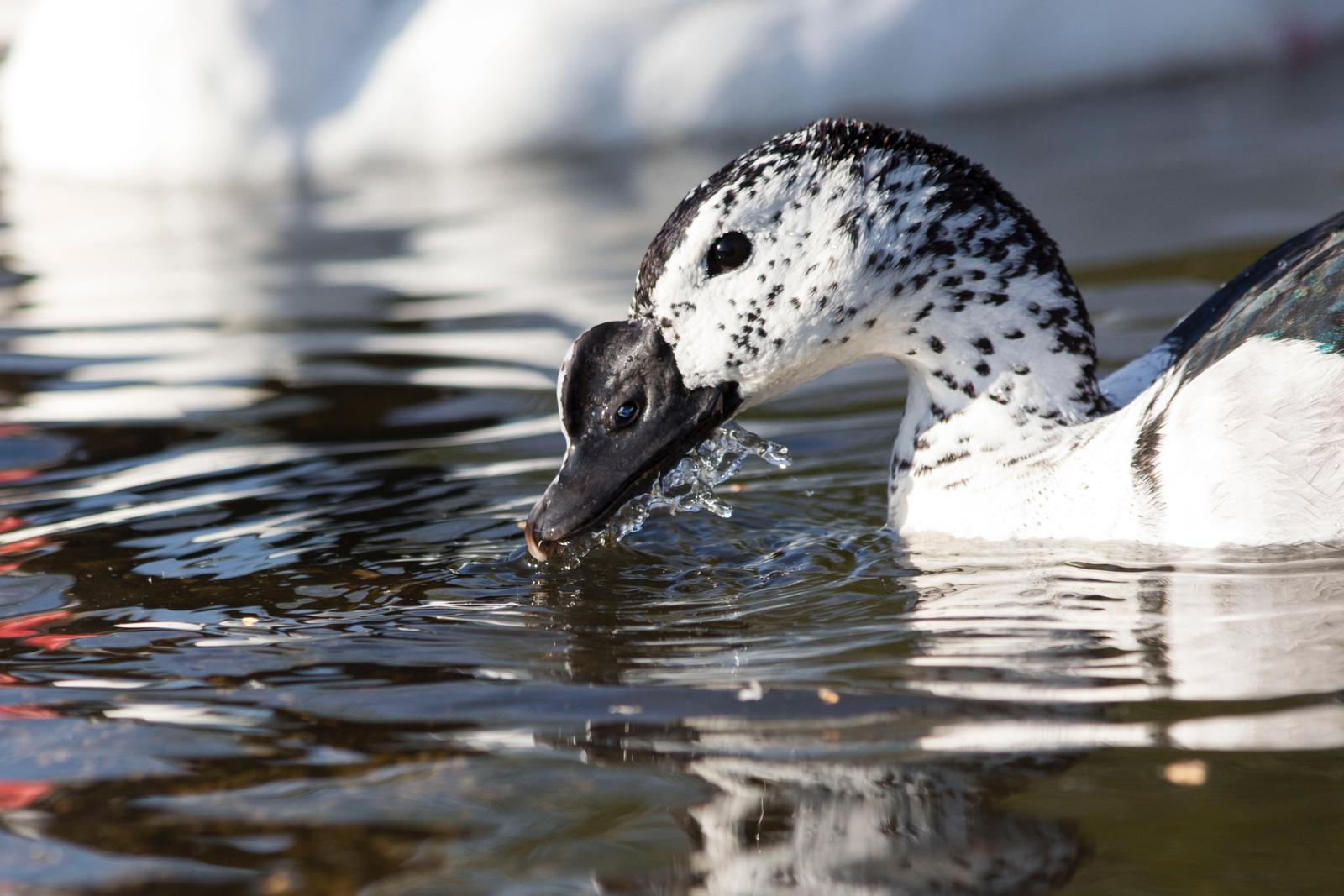African comb ducks.
African comb duck or knob-billed duck are a very attractive species, showing stunning feather iridescence and a prominent facial knob! The more dominant the male the larger the comb on his head, and these can grow exceptionally large during their lifespan. An African comb duck should have very pale silver flanks in comparison to the black flanks of their cousin the American comb duck. The males are significantly larger than the females, almost twice the size and weight in some cases. The females do not have the knob or sheer volume of iridescence, almost resembling a diminutive permanent juvenile form.

Nesting in holes in trees
The species is found throughout much of Africa south of the Sahara, including Madagascar. They are not rare, but they are incredibly interesting. Due to the tininess of the females they are capable of cavity nesting in large forest trees. Males perch on branches nearby.
Males show off to attract a mate
Many people believe that a female can court several males at once before choosing the best example as the father of her offspring. To prove themselves, males will engage in elaborate posturing. They circle one another with their breasts pushed out, neck feathers bristled and combs quivering. The size of the comb is a sign of health, because the comb expands and contracts each spring and summer according the male’s status and condition.

Chicks have to jump out of the nest
As is the way with the more ornate males, the males of this species does not engage in rearing the young. A female can lay from 8-14 creamy round eggs. As with all cavity nesters, these babes have to hatch and jump to the ground before they can feed for the first time. This is a strategy that makes the ducklings vulnerable as they cannot return to the nest later for warmth and safety. Many cavity nesters hatch large volumes of ducklings in the hope that some of them will make it to adulthood. These factors make the ducklings very independent and instinctive, and a joy to rear.

Facial knobs
It is a very common thing in the wildfowl world for male ducks to develop both permanent and seasonal adornments in order to advertise their status. Some birds develop red patches, others extra pigment in their eyes. The comb duck is one of many species to develop a facial swelling as a sign of health and virility. The comb duck species are notable for the investment in the sheer size of their seasonal knob. As the comb begins to shrink post-moult and on the approach to winter, they can be quite comical and slump to one side of their beak. The bird above will retain his energy during the winter, before growing it again next spring.
Come and see them at Slimbridge
It’s great to have them back here at Slimbridge and to be establishing a healthy population. It’s only in the last 5 years that the species has been back on display after a 20 year gap. We received four birds in 2013 and bred 12 from one nest in 2015. They really enhance our Lesser Flamingo enclosure, so please do look out for them on your next visit to us.

Thank you for reading!

